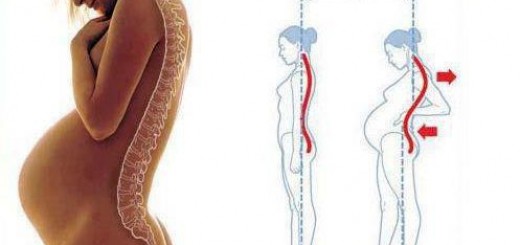 Soy is definitely one of the most controversial foods in the world.
Soy is definitely one of the most controversial foods in the world.
Depending on who you ask, it is either a wonderful superfood or a hormone disrupting poison.
As with most things in nutrition, there are good arguments on both sides.
What is Soy and How is it Used?
Soybeans are legumes that originated in East Asia, but are now being produced on a large scale in the United States.
Soy is used to make many different foods. Soybeans can be eaten whole, with the immature types being called edamame. Soybeans must be cooked, as they are poisonous when raw.
Soy is used in tofu, soy milk and various dairy and meat substitutes. It is also used in fermented foods like miso, natto and tempeh, which are commonly consumed in some Asian countries.
Over 90% of soy produced in the U.S. is genetically modified and the crops are sprayed with the herbicide Roundup, which may be associated with adverse effects on health (1).
Interestingly, whole soybeans are rarely consumed in Western countries. The majority of soy in the diet comes from the refined products that are processed from the soybeans.
Most of the soy crop in the U.S. is used to produce soybean oil, which is extracted using the chemical solvent hexane. Soybean oil supplied about 7% of calories in the U.S. diet in the year 1999 (2).
What remains of the soybean after the fat has been extracted is called soybean meal, which is about 50% protein. The majority of soybean meal is used to feed livestock, but it can also go through further processing to produce isolated soy protein.
Because it’s cheap and has certain functional properties, soybean oil and soy protein have found their way into all sorts of processed foods, so most people in the U.S. are consuming significant amounts of soy without even knowing about it.
Soy protein is also the major ingredient in soy-based infant formulas.
Bottom Line: Most soy in the U.S. is used to make soybean oil. The waste product is then used to feed livestock or processed to produce soy protein. Whole soybeans are rarely consumed.
Nutrients in Soybeans
Whole soybeans contain a range of important nutrients.
100 grams (about 3.5 ounces) of mature, boiled, whole soybeans contain large amounts of Manganese, Selenium, Copper, Potassium, Phosphorus, Magnesium, Iron, Calcium, Vitamin B6, Folate, Riboflavin (B2), Thiamin (B1) and Vitamin K.

This portion of soybeans also contains 173 calories, with 9 grams of fat, 10 grams of carbs (6 of which are fiber) and 17 grams of protein (4).
The respectable amount of nutrients needs to be taken with a grain of salt, because soybeans are also very high in phytates, substances that bind minerals and reduce their absorption.
Soybeans are a pretty good source of protein. They’re not as good as meat or eggs, but better than most other plant proteins. However, processing soy at a high temperature can denature some of the proteins and reduce their quality.
The fatty acids in soybeans are mostly Omega-6 polyunsaturated fats. This can be problematic because too many Omega-6s in the diet can lead to inflammation and all sorts of health issues (5, 6).
For this reason, it is very important to avoid soybean oil (and other vegetable oilshigh in Omega-6) and processed foods that contain it.
Be aware that the nutrient composition of soy depends dramatically on the type of soy food. Whole soybeans can be nutritious, while refined soy-derived products like soy protein and soybean oil aren’t nutritious at all.
Bottom Line: Whole soybeans are rich in micronutrients, but they also contain phytates which block absorption of minerals. Soybeans are very rich in Omega-6 polyunsaturated fatty acids, which can cause problems.
Soy May Have Some Health Benefits

It wouldn’t be right to talk about all the bad stuff without mentioning the good. The truth is that there is some evidence of health benefits in certain people.
Soy has been well researched for its cholesterol lowering effects and several studies show that soy protein can reduce Total and LDL cholesterol, although others find no effect (7, 8, 9, 10).
It’s important to keep in mind that even IF soy reduces cholesterol (which studies don’t agree on), there is no guarantee that this will lead to a decrease in heart disease.
Observational studies show a mixed bag of results. Some studies show a reduced risk of heart disease, others do not (11, 12).
There are also some observational studies showing that soy can reduce the risk of prostate cancer in old age, which is the most common cancer in men (13, 14).
Bottom Line: There is some evidence that soy can lower cholesterol levels, although studies show conflicting results. Men who consume soy are at a lower risk of developing prostate cancer in old age.
Soy Contains Isoflavones That Function as Endocrine Disruptors

Estrogens are steroid hormones mostly found in females, where they play a major role in regulating sexual development and reproductive cycles.
Estrogens are also found in men, although in smaller amounts.
The way estrogens (and other steroid hormones) work, is that they travel into the nuclei of cells and activate the estrogen receptor.
When that happens, there are changes in gene expression, leading to some kind of physiologic effect.
The problem with the estrogen receptor is that it isn’t very selective in the substances that can activate it. Some substances in the environment that look like estrogen can activate it too.
This is where the whole soy thing gets interesting…
Soy contains large amounts of biologically active compounds called isoflavones, which function as phytoestrogens… that is, plant-based compounds that can activate estrogen receptors in the human body (15).
These isoflavones are classified as endocrine disruptors, chemicals that interfere with the normal function of hormones in the body. The key isoflavones in soy are genistein, daidzein and glycitein.
This can cause reduced estrogen activity due to the isoflavones blocking the actual, more potent estrogen from binding, or it can lead to an increased estrogen activity due to the isoflavones activating the receptors (16).
Bottom Line: The isoflavones found in soy can activate and/or inhibit estrogen receptors in the body, which can disrupt the body’s normal function.
Soy Isoflavones May Affect The Risk of Breast Cancer

Due to the estrogenic activity, these isoflavones are often used as a natural alternative to estrogenic drugs to relieve symptoms of menopause.
In fact, isoflavones can reduce symptoms when women are going through menopause, as well as reduce the risk of bone loss in elderly women, just like estrogen replacement therapy (17, 18).
However, this use is controversial and many believe that the risks outweigh any potential benefit.
Animal studies show that soy isoflavones can cause breast cancer (19, 20, 21). There are also human studies showing that soy isoflavones can stimulate the proliferation and activity of cells in the breasts.
In one study, 48 women were split into two groups. One group ate their normal diet, the other supplemented with 60 grams of soy protein.
After only 14 days, the soy protein group had significant increases in proliferation (increase in number) of the epithelial cells in the breasts, which are the cells that are most likely to turn cancerous (22).
In another study, 7 of 24 women (29.2%) had an increased number of breast epithelial cells when they supplemented with soy protein (23).
These changes may indicate an increased risk of breast cancer, which is the most common cancer in women. However, many observational studies show that women who consume soy actually have a reduced risk of breast cancer (24, 25).
It is a good idea not to make decisions based on observational studies… which tend to be unreliable. The biological changes in the breasts and the studies where soy causesbreast cancer in rodents are a major cause for concern.
There are also some small human studies where soy caused mild disruptions of the menstrual cycle, leading to delayed menses and prolonged menstruation (26, 27).
Bottom Line: Soy isoflavones can increase the multiplication of cells in the breasts. However, observational studies show a reduced risk of breast cancer. Soy may lead to mild disruptions of the normal menstrual cycle.
Soy, Testosterone and Male Reproductive Health

Even though men have some amount of estrogen, having significantly elevated levels is not normal.
Therefore, it seems logical that increased estrogen activity from soy isoflavones could have some effects on men.
In rats, exposure to soy isoflavones in the womb can lead to adverse effects on sexual development in males (28, 29).
In one human study, 99 men attending an infertility clinic were studied. The men that had eaten the most soy for the past 3 months had the lowest sperm count (30).
Of course, this study is just a statistical correlation and does not prove that it was the soy that lead to decreases in sperm count.
Another study found that 40 milligrams per day of soy isoflavones for 4 months had no effect on hormones or semen quality (31).
Many believe that soy can reduce testosterone levels, but the effect appears to be weak and inconsistent. Some studies show a small reduction, while others find no effect (32, 33).
Bottom Line: Exposure to estrogen-like compounds in the womb can lead to adverse effects on males. Studies on the effects of soy on testosterone and sperm quality are inconclusive.
Soy May Interfere With The Function of The Thyroid

The isoflavones in soy also function as goitrogens, which are substances that interfere with thyroid function.
They can inhibit function of the enzyme thyroid peroxidase, which is essential for production of thyroid hormones (34, 35).
One study in 37 Japanese adults revealed that 30 grams (about 1 oz) of soybeans for 3 months raised levels of Thyroid Stimulating hormone (TSH), a marker of impaired thyroid function.
Many subjects experienced symptoms of hypothyroidism, including malaise, constipation, sleepiness and thyroid enlargement. These symptoms went away after they stopped consuming the soybeans (36).
However, there are other studies showing that soy has either no effect or only a very mild effect on thyroid function in humans (37, 38, 39).
Bottom Line: Even though soy isoflavones have been shown to inhibit the function of a key enzyme in the thyroid, there is not enough evidence to conclude that they contribute to hypothyroidism in adults.
Soy-Based Baby Formula is a Bad Idea
Exposing infants to isoflavones by feeding them soy-based infant formula can have harmful effects.

In one study, infant girls fed soy formula had significantly more breast tissue at 2 years of age than those who were fed breast milk or dairy-based formula (40).
Another study showed that girls fed soy formula were much more likely to go through puberty at a younger age (41).
There is also evidence that soy formula during infancy can lead to a lengthening of the menstrual cycle and increased pain during menses in adulthood (42).
Soy is also very high in manganese, MUCH higher than breast milk, which may lead to neurological problems and ADHD (43, 44). Soy infant formula is also high in aluminum, which can cause all sorts of problems (45, 46).
There is no question about it… breast milk is by far the best nourishment for babies. For women who can not breastfeed, milk-based formula is a much better option than soy-based formula, which should only be used as a last resort.
Bottom Line: There is significant evidence that soy-based infant formula can cause harm, both via its isoflavone content and its unnaturally high content of manganese and aluminum.
Fermented Soy May be Safe in Small Amounts

It is true that many Asian populations have consumed soy without apparent problems.
In fact, these populations tend to be much healthier than Westerners, although they’ve started to suffer many of the same diseases now that the Western diet has invaded those countries.
The thing is… these populations usually consume fermented soy products like natto, miso and tempeh.
Fermenting soy degrades some of the phytic acid, although it doesn’t get rid of the isoflavones (47).
Asian populations use these fermented soy products primarily as condiments, NOT as the foundation of meals. For this reason, their total intake of soy isoflavones is relatively low (48).
Natto may be especially healthy, as it also contains a significant amount of Vitamin K2, which is important for cardiovascular and bone health and many people aren’t getting enough of (49, 50).
The dose makes the poison… and phytoestrogens are probably fine if you don’t eat that much. If you’re going to consume soy, choose fermented soy products and use small amounts.
Take Home Message
Reviewing the evidence on soy is incredibly confusing. For every study showing harm, there is another one showing beneficial effects.
However, I’d like to point out that in every study I looked at that showed beneficial effect, the study was either sponsored by the soy industry, or the authors had some kind of financial ties to the soy industry.
This doesn’t necessarily mean that their studies are invalid, but it’s something to keep in mind.
At the end of the day, it is important for women who are pregnant, plan on becoming pregnant, or are breastfeeding, to avoid soy and other sources of endocrine disrupting compounds.
Avoiding soy infant formula is very important as well. It should only be used as a last resort.
However, the evidence is too weak and inconsistent to conclude that moderate amounts of soy cause harm in adults.
I personally choose to avoid soy… even though the evidence is inconclusive, the fact that it is a relatively new food in the diet that contains endocrine disrupting compounds is reason enough for me.
Original Article by: Kris Gunnars at AuthorityNutrition





